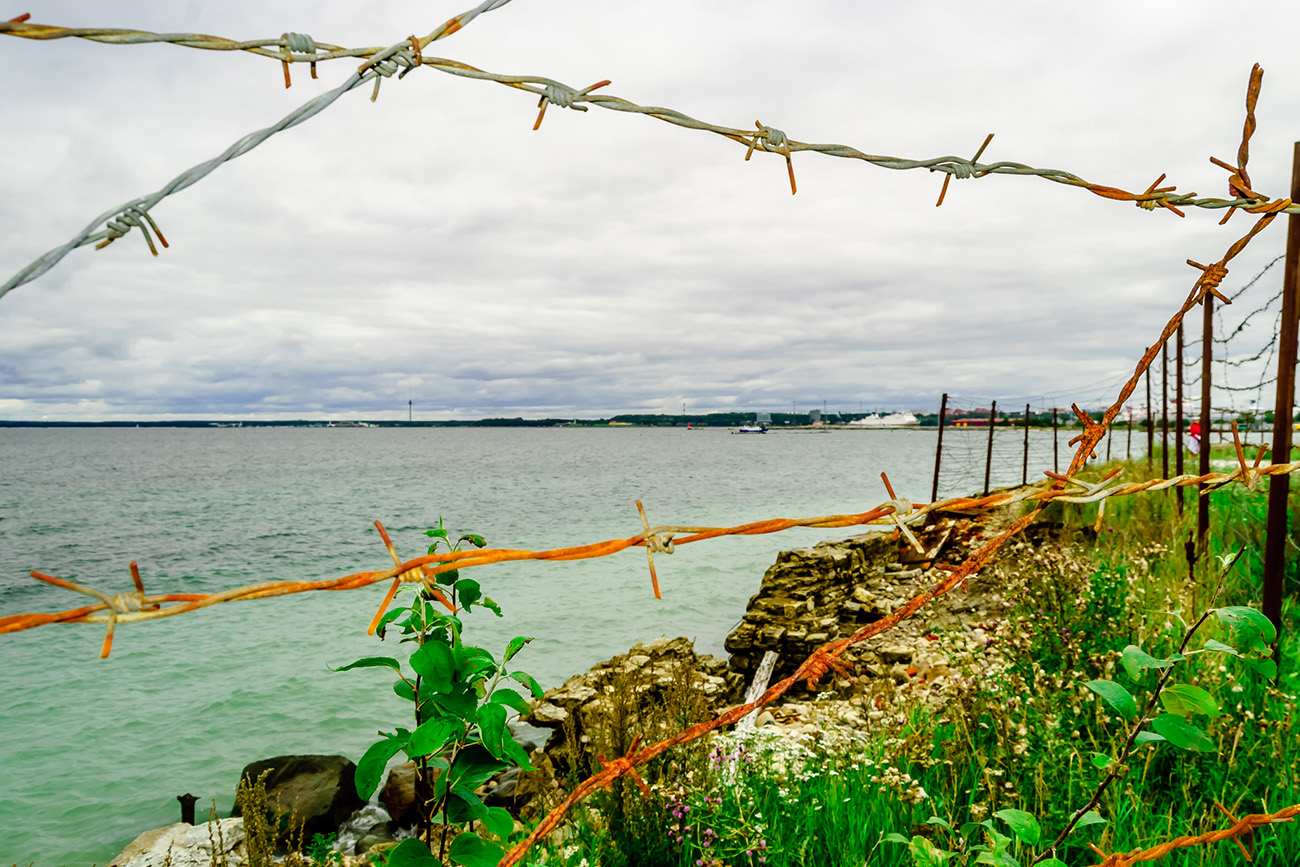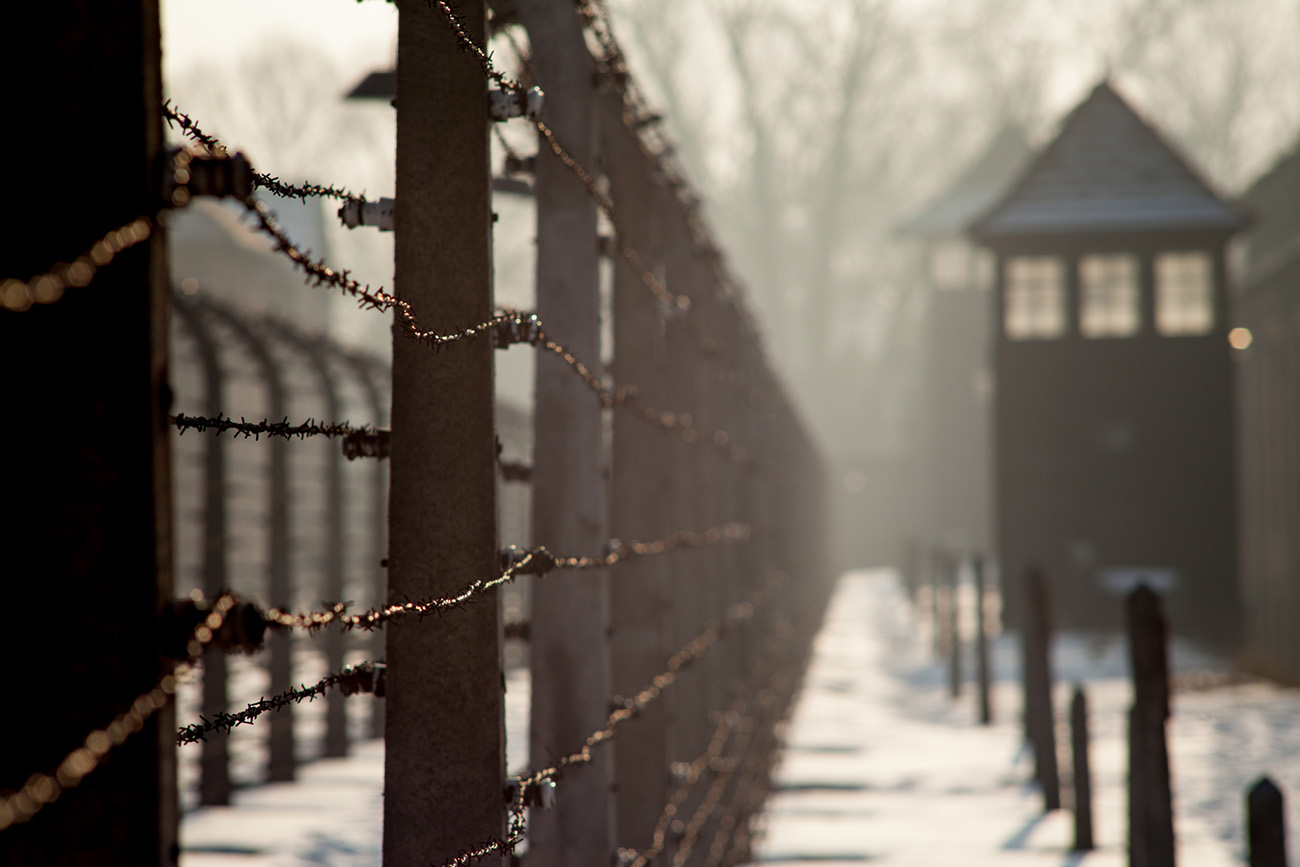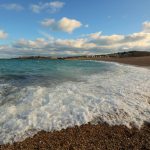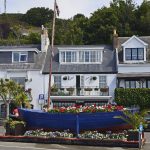
As such there has been a tendency to simply try and forget that they ever existed rather than recognising that they were constructed and housed thousands of prisoners during the war, many of whom died under brutal circumstances. Our knowledge of them is growing extensively eight decades later, not least owing to the appearance of an excellent new study by Caroline and Kevin Colls on the camps on Alderney. The following details some of the latest findings with regard to each of the four camps.
Borkum Labour Camp
Borkum was located very close to the centre of Alderney, though closer to the east of the island than the west. It was the least malevolent of the four camps on the island and there appears to have been little violence or murder here. This was because Borkum was a more mainstream prison in the sense of the modern word. At its height in August 1942 there were upwards of 950 men here (though usually the occupancy was much lower). Of these, the bulk were Germans, with a few dozen French and a smattering of other nationalities.
It was a standard labour camp in so far as it was run by Operation Todt and many of those sent here were skilled artisans like carpenters, metallurgists and builders who were needed to work on elements of the defence of the islands. In line with its role as a standard labour camp, Borkum was the last of the four camps still in operation, the others having been shut down before July 1944.
It was still intact when the islands were liberated in May 1945 and was used thereafter as a POW prison to house members of the German garrison who had surrendered. Thereafter it was largely dismantled, though some small remains of it are still visible in the landscape today. Overall, Borkum was the camp where inmates suffered the least and there were seemingly few deaths or atrocities here.
Helgoland Labour Camp
Helgoland was located in the north-west of Alderney. Conditions here were certainly not as favourable as at Borkum. The camp was initially overseen by an Operation Todt Obertruppfuhrer by the name of Backer, a drunk who was responsible for the camp being poorly built.
The huts used to accommodate the labourers were built to set into the ground and as a result the prisoners suffered from damp conditions throughout the war which led to serious outbreaks of illness (dysentery was the main one) that killed many. Diarrhoea was also a problem owing to the diet and environment and this was compounded by the fact that the camp was only served by one block of poorly built toilets and a concrete septic tank which regularly overflowed, compounding the disease problem in the camp.
The inmates here were mostly labourers from countries like France, Belgium and the Netherlands, though Russians were also sent here (a designation that might have included people from Ukraine, Belarus or the Baltic States as well as Russia), while there is also some record of a small number of Jewish labourers at Helgoland.
Food rations here were poor and were distributed in line with Nazi racial ideology.
This meant that labourers from France and other parts of Western Europe received more than the virtual starvation rations given to the Soviet prisoners.
Other crimes included physical punishment of inmates, largely by hitting them with rubber truncheons and sticks, acts which were confirmed later to be a daily occurrence. Peculiarly, though, there was a very limited defence perimeter at Helgoland and prisoners seem to have only had to escape beyond a barbed wire fence to get out.
The assumption must have been that they would quickly be apprehended anyway if they escaped, given the militarised nature of Alderney and the small size of the island. Helgoland was gradually decommissioned from late 1943 and the prisoners sent to Norderney.
The camp was completely dismantled in the spring and summer of 1944. Only the gateposts at the entranceway survive today, as part of the front wall of a house, part of a housing estate which was built over the camp.
Sylt – From Punishment Camp to Concentration Camp
Sylt labour camp was established in the south-west of Alderney not far from where the island’s airport is today. It was initially set up under the direction of Operation Todt as a labour camp. When built in 1942 it was the smallest of the four on the island, only able to house about 200 prisoners, and built as a sort of ‘punishment camp’ for labourers who had broken the rules at Helgoland, Borkum or Norderney.
A large number of the inmates at this early juncture were Spaniards, men who had fled with their families from Spain to France at the end of the Spanish Civil War in the first months of 1939. An agreement existed between Franco and Hitler that these hundreds of thousands of individuals would be rounded up in France after the Nazis took the country over in 1940 and pressed into prison service. These Spaniards were joined by French and German prisoners at Sylt.
 The rations here were very meagre during its time as a ‘punishment camp’, with nothing but black coffee for breakfast, a thin soup of little more than water, tomatoes and some vegetables for lunch, and a slightly thicker soup with some bread and a sliver of butter for dinner. Beatings were common and there was no medical service of any kind at Sylt. At least dozens of inmates were killed at here owing to the conditions during its time as a ‘punishment camp’ and possibly hundreds.
The rations here were very meagre during its time as a ‘punishment camp’, with nothing but black coffee for breakfast, a thin soup of little more than water, tomatoes and some vegetables for lunch, and a slightly thicker soup with some bread and a sliver of butter for dinner. Beatings were common and there was no medical service of any kind at Sylt. At least dozens of inmates were killed at here owing to the conditions during its time as a ‘punishment camp’ and possibly hundreds.
Sylt has the distinction of changing from one kind of camp to another in March 1943. That month a division of the SS, the most ideologically committed paramilitary organisation of the Nazis who administered the concentration camp system across Europe, arrived to the island and began transforming Sylt from a labour/punishment camp into a concentration camp.
Under SS direction the camp was significantly expanded and was re-developed to have a large perimeter defence in the shape of electrified fences and turrets. The new barracks were in many senses better built than those at the labour camps, but they quickly became overcrowded and disease-ridden as more than 1,000 inmates were brought here, while rations were very meagre indeed.
The workers here were a mix of nationalities, with many Jews and many deaths.
The purpose of transforming the camp in this way was to develop a more brutal slave camp where defences for the inevitable Allied invasion of Western Europe were prepared, the inmates at Sylt being set to building gun turrets, sea defences and other aspects of the defences of the Atlantic Wall.
With the D-Day landings of June 1944 the purpose of the camp became obsolete, and it was abandoned, and the SS removed from the island. The process was particularly bloody, and dozens of inmates were killed in an arbitrary fashion as the camp was being dismantled. Some elements of it remained after the war, but these have gradually been built over, with one section of the camp now covered by a part of Alderney Airport.
Norderney – A Labour or Concentration Camp?
Norderney was the closest camp to Britain, being located in the far north-east of Alderney right next to Saye Beach. It was an Operation Todt labour camp (though curiously enough it was briefly established in 1941 as a volunteer labour camp for the German company Sager and Worner), but later, after they arrived on the island in March 1943, the SS took up a supervisory role at Norderney. As such, the camp has an ambiguous position as both a labour camp and a concentration camp.
There was a mixed picture of nationalities here, with many labourers from Western Europe, but also Jewish prisoners and Soviet prisoners, the latter groups being more poorly treated.
The conditions here were particularly bad, with regular beatings, poor rations and dreadful sanitation. Straw was often used instead of beds and blankets. A peculiar feature of the region was the construction of the so-called ‘tunnel of death’, an underground stone tunnel built to provide passage through the inlet which divides Saye Bay and Corblets Bay.
The intention was to mass murder the inmates of Norderney within this tunnel using machine gun stations if there was an invasion of Alderney by the Allies. Thankfully, it was never used for this purpose. The tunnel itself is still present in the landscape today. One wonders how many tourists or locals are fully aware of when and why it was built!
Norderney was gradually closed from the spring of 1944 onwards and many of the inmates were transferred to the French mainland. Unfortunately, some 250 of these, mostly Jewish labourers, were killed at sea when the boat that was transporting them back to France was sunk by the British Royal Navy between St Helier and St Malo, the British being unaware that it was transporting prisoners.
Would you like to learn more about the history of the Channel Islands? Then don’t miss our latest article: A look into Alderney’s history






